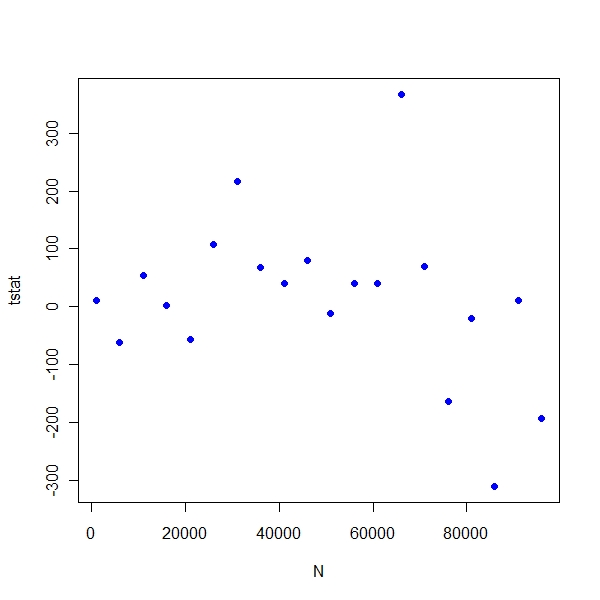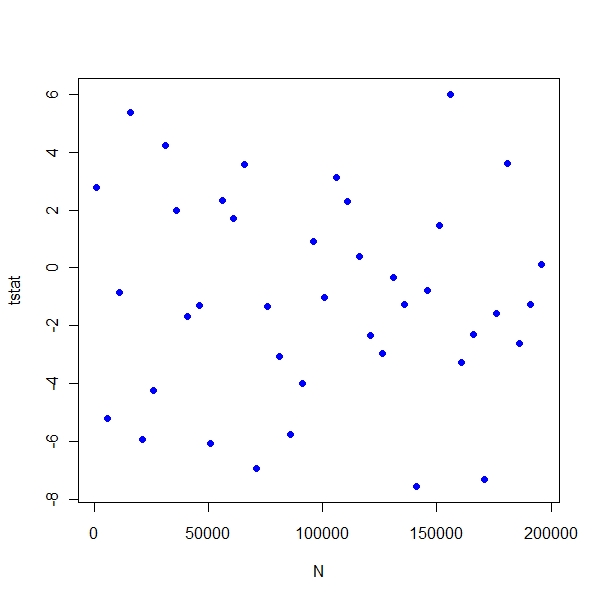Spurious Regression - Visualization
Purpose
If two non stationary series are regressed, the t stat increases
> set.seed(1977)
> N <- seq(1000, 1e+05, 5000)
> results <- numeric(0)
> for (i in seq_along(N)) {
+ y <- cumsum(rnorm(N[i]))
+ x <- cumsum(rnorm(N[i]))
+ fit.sum <- summary(lm(y ~ x))
+ results <- c(results, coef(fit.sum)[2, 3])
+ }
> plot(N, results, pch = 19, col = "blue", ylab = "tstat", xlab = "N") |

clearly t stat diverges
If two stationary series are regressed, the t stat increases
> set.seed(1977)
> N <- seq(1000, 2 * 1e+05, 5000)
> results <- numeric(0)
> for (i in seq_along(N)) {
+ y <- arima.sim(n = N[i], model = list(ar = 0.9))
+ x <- arima.sim(n = N[i], model = list(ar = 0.95))
+ fit.sum <- summary(lm(y ~ x))
+ results <- c(results, coef(fit.sum)[2, 3])
+ }
> plot(N, results, pch = 19, col = "blue", ylab = "tstat", xlab = "N") |

clearly t stat converges when you regress 2 stationary processes.